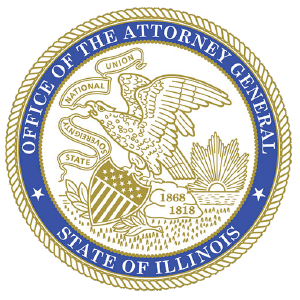Daniel L. Ryan
Bishop Daniel Ryan was an important man. As the head of the Diocese of Springfield from 1984 to 1999, he was charged with governing tens of thousands of Catholics in central Illinois—counting among his responsibilities teaching doctrine, representing the church, and sanctifying the world. What “Scott” remembers, however, is the way Ryan smelled. “Like old stink and alcohol,” he told the Attorney General’s investigators. Many decades have passed since Ryan raped Scott repeatedly in the basement of the Cathedral of the Immaculate Conception in Springfield. “But I can still smell him right now,” Scott says.
Ryan was not merely the bishop of Springfield; he was also a local boy made good. He moved to the city as a child and graduated from Cathedral Boys High School in the late 1940s. But it was up north, in the recently established Diocese of Joliet, where he got his start as a priest in 1956. And once ordained, he rose quickly through the diocese’s ranks—serving in short succession as Joliet’s notary, actuary, assistant chancellor, chancellor, vicar general, and, finally, auxiliary bishop. So when Springfield’s Bishop Joseph McNicholas died unexpectedly in the spring of 1983, it was no surprise Joliet’s shining star was tapped to fill those shoes. Ryan’s homecoming was made official in January 1984 when he was installed as Springfield’s bishop at the Cathedral of the Immaculate Conception—the same church complex where he would later rape Scott.
“You are serving God by doing this,” Ryan insisted. But he also warned Scott, “Don’t tell your parents or else something bad will happen to them.”
Ryan began to abuse Scott soon after arriving in Springfield. The boy was about 11 years old and spent a lot of time at the cathedral. It was where his family attended church and he was an altar server; it was also where he was enrolled in the fifth grade. One day, Scott served mass with Ryan. When they were done, the bishop asked the boy to come with him to the cathedral basement. “I need you to help me with something,” Ryan explained.
“It’s hard to remember what the basement looked like,” Scott reflects today. He knows it “felt bad” down there—like “a dark place where bad things happened.” On that terrible day in 1984, Ryan began to lick Scott’s face and made the boy fondle the bishop’s penis. Then, he forced anal sex on the child. “This will only hurt for a second,” Ryan tried to assure him.
This was not the only time Ryan sexually abused Scott. It happened about eight times over the course of a few years. It always took place in the cathedral basement—and Ryan always smelled of body odor and booze. Each time, the bishop issued specific instructions to the boy. “Put it in your mouth.” “Bend over.” “You are serving God by doing this,” Ryan insisted. But he also warned Scott, “Don’t tell your parents or else something bad will happen to them.”
Scott didn’t know it at the time, but he was not Ryan’s only victim. Years later, in 2019, the Diocese of Joliet confirmed Ryan as a substantiated child sex abuser. And in 2002, Ryan was accused of soliciting a 15 year old Springfield boy for sex in 1984—the same year he returned to the city and began abusing Scott. The boy said the bishop saw him walking one night and offered a ride. They wound up in the cathedral rectory, where Ryan said he would pay the boy $50 to strip naked and let the bishop massage him with baby oil. During the massage, Ryan tried to have sex with the child, but the boy resisted and escaped. Because of a perceived conflict of interest, the Diocese of Springfield referred this allegation to the Diocese of Peoria, which concluded in 2002 that Ryan should no longer function publicly due to the potential for “spiritual harm to the faithful.” No mention was made in the Diocese of Peoria’s findings of harm to children.
By the time the Diocese of Peoria made its 2002 determination that Ryan should no longer function in public ministry, it was too late. Ryan had retired as Springfield’s bishop three years earlier in 1999. His final years at the diocese’s helm were turbulent. He was accused of sexually abusing at least two children in January 1995. The diocese apparently did nothing—and for one of those survivors, the abuse continued another four years.
As for Scott, it took about three decades until he felt comfortable talking to anyone about Ryan’s abusing him in the mid-1980s. He has experienced suicidal thoughts and is now in therapy. Ryan was never prosecuted. The powerful bishop from Springfield died in 2015 without facing justice for what he did to Scott and other young boys.
